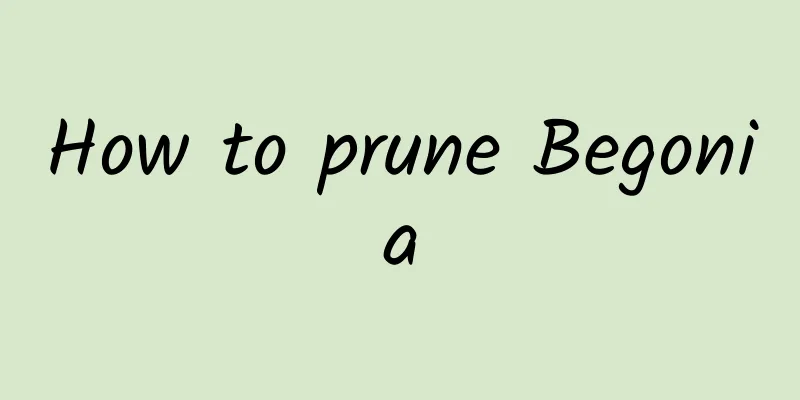How to prune Begonia

Begonia pruningThe best time to prune Begonia is in spring or autumn, when the wounds will heal faster and the survival rate will be higher. 1. Begonia needs to retain some branches with good growth and cut off some branches that are not growing well. If they grow too densely, you can properly comb out some of the denser branches, leaving the strong ones and cutting off the thin ones. 2. According to the law of survival of the fittest, first cut off those diseased branches, insect-infested branches, and bent and entangled branches from the base. This will not only reduce nutrient consumption, but also encourage the plant to sprout new branches and make the new branches grow thicker. Be careful not to leave stumps when pruning, and be sure to prune thoroughly from the base. 3. Although some branches grow healthily, they also need to be thinned out. This can not only allow new branches to sprout and facilitate the growth of flower buds, but also increase the light transmittance of the plant and maintain a good plant shape. The principle of pruning branches is to lightly prune strong branches and heavily prune weak branches. In places with sufficient nutrient conditions, light pruning should be done to keep the branches long, and heavy pruning should be done to keep the branches short where the nutrient conditions are relatively poor. Begonia pruning tipsThoroughly and cleanly cut off diseased and insect-infested branches, crossed branches, overcrowded branches, overlapping branches, and inner branches that affect the tree shape and consume nutrients unnecessarily from the base, and retain a certain number of branches of moderate size and in the correct direction. The height of the cut and remaining branches should be consistent with the base. Begonia grows fast after pruningSince the old branches of Begonia that have grown for 3-5 years have the largest number of flowers, the flowering branches should be renewed year by year. In the first year, half of the branches can be cut off to promote the development of new branches. In the second year, one-third of the branches can be cut off to promote the flowering of the plant. Begonia pruning and floweringIn order to keep the whole plant in a beautiful shape, in addition to spring pruning, the plant also needs to be pruned after flowering. Half a month after the end of flowering, the more crowded branches on the plant should be cut off, and the branches that have grown too long should be shortened appropriately. Except for retaining 3 or 4 buds from the base, the rest can be cut off. Things to note when pruning BegoniaIn order to control the height of the plant, the branches need to be pruned back, but be careful not to damage other branches and flower buds when pruning. Also pay attention to the pruning length, which should not be too long, so as not to affect the amount of flowering. |
<<: Can mulberry seeds be planted?
>>: How to prune Polygonum multiflorum potted plants
Recommend
How to grow hydroponic daffodils
Maintenance methods During the day when there is ...
How to grow flowers more vigorously?
Nowadays, more and more friends are growing flowe...
Environmental conditions and characteristics of laver growth
Environmental conditions and requirements for the...
The best time to repot honeysuckle is the repotting season (late spring and early summer)
Honeysuckle repotting time Generally speaking, th...
Purslane cultivation method
1. Maintenance methods 1. Temperature: It has str...
Difference Between Winter Wheat and Spring Wheat
1. The difference between winter wheat and spring...
How to propagate the succulent plant David
1. Stem cuttings The succulent David is the same ...
What is yam? How many types of yam are there?
1. What is 1. Appearance: Yam is a plant that can...
The difference between California poppy and corn poppy
1. Different appearance California poppy: It is a...
How to raise Brazilian beauties
1. Maintenance methods 1. Substrate selection: It...
The difference between zebra aloe and striped snake plant
1. Difference of blades The leaves of zebra aloe ...
How to fertilize asparagus fern
1. How to fertilize During the growing period of ...
How often should I water Photinia
How often should I water Photinia Don't water...
High-yield planting and management techniques for loofah
Luffa is an annual herb with a life cycle of abou...
Green diamond breeding methods and precautions
1. Maintenance methods 1. Temperature: Although i...









